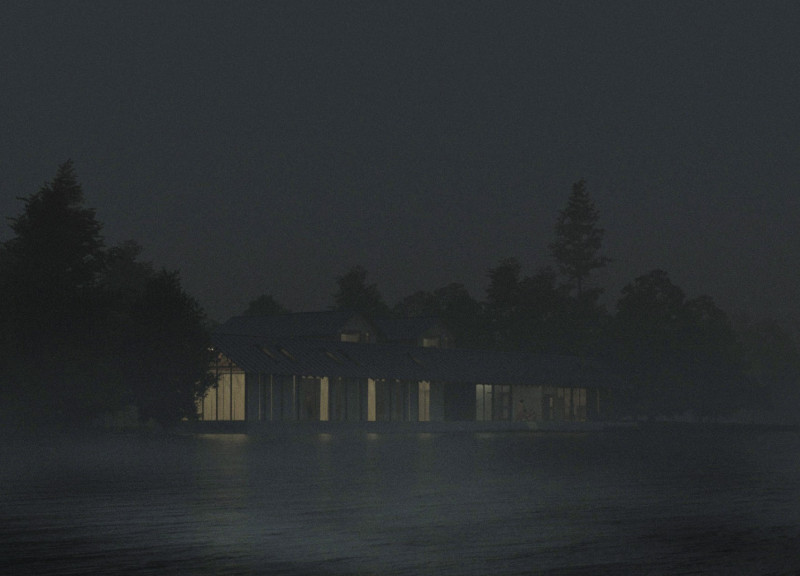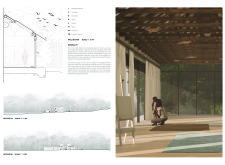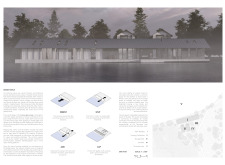5 key facts about this project
The Latvia Lake House is a residential architectural project located near Cernotes Lake in Latvia. Designed as a retreat for artists and their families, the project emphasizes a balance between functionality and aesthetic qualities, while responding to the surrounding natural landscape. The design harmonizes communal and private spaces, fostering social interaction alongside personal creativity. This project reflects an integration of contemporary architectural practices with local traditions, particularly through the use of timber, a common material in Latvian construction.
Unique Community-Oriented Functionality One of the primary functions of the Latvia Lake House is to serve not only as a dwelling but also as a collaborative space for artistic expression. The layout includes dedicated areas for artistic work, specifically an art studio that benefits from ample natural light. In addition to private living quarters for families, the main living space promotes communal interaction, equipped with a kitchen and living areas that encourage gatherings. This design approach prioritizes human connection, emphasizing the importance of shared experiences in creative environments.
The project employs a D-form layout that spatially distinguishes between communal and private zones, enhancing both usability and visual appeal. Extensive glazing on the façade facilitates views of the lake and maximizes daylight, a significant factor in creating a conducive atmosphere for both living and working. Outdoor spaces are also integrated into the design, allowing residents to engage with the natural environment directly, through gardens and walking paths that promote outdoor activities.
Sustainable Design Strategies Sustainability is a core principle in the Latvia Lake House project. The choice of materials focuses on local and reclaimed resources, significantly reducing the environmental impact associated with construction. Reclaimed wood, concrete, steel, and insulation materials are used throughout the design, illustrating a commitment to ecological considerations. The use of large windows not only provides visual connections to the outside landscape but also aids in passive heating and cooling, contributing to energy efficiency.
Structural considerations reflect an understanding of the regional climate, ensuring durability and comfort throughout the year. This attention to sustainability extends beyond materials; the project takes into account the ecological footprint, aiming to preserve local biodiversity while creating a nurturing environment for both residents and artists.
Engagement with Landscape and Culture The Latvia Lake House embodies a strategic engagement with its environment, both geographically and culturally. The architectural design draws inspiration from traditional Latvian timber buildings, adapting these forms to contemporary standards. This connection to cultural heritage is accentuated by the integration of local craftsmanship in material selection and construction techniques.
The project's approach not only honors local identity but also fosters a sense of belonging among residents. It establishes a dialogue between architecture and its surroundings, enhancing the overall livability of the space. The thoughtful integration of landscape features encourages interactions between the built environment and the natural elements of Cernotes Lake.
For a comprehensive understanding of the architectural plans, sections, and designs utilized in the Latvia Lake House project, readers are encouraged to explore the detailed project presentation. The insights into architectural ideas and innovative functions provide a deeper appreciation of the thoughtful design executed in this unique project.


























